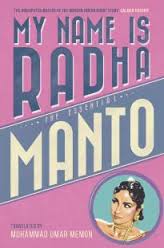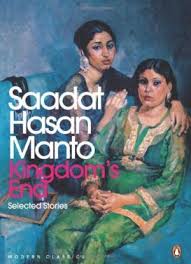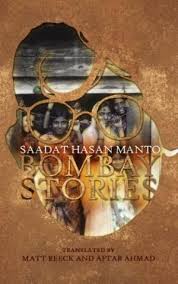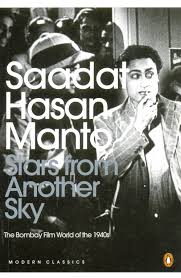My column, “PubSpeak” in BusinessWorld online, May 2013. The link is here: http://www.businessworld.in/en/storypage/-/bw/hear-this-story/881657.0/page/0

In September 2011 at the PubNext conference, I heard of a bouquet of books being offered in Tamil at a very reasonable price, but on a data card. This is strategic marketing since this highlights the potential for the phone and tablet market. It also coincides with the growth in 3G or mobile broadband connections in India.
Nearly a decade ago, a friend from the phone industry and I experimented with the conversion of a short story into an audio file. We hired a recording studio and voice actors for the dramatisation. After some trial and error we generated a short audio clip, designed to suit the needs of the telephone industry (landline as well as mobile). Listeners could pause the story at any point and resume listening at a later time, an especially convenient feature for women. The business model was good but the experiment was a little before its time. One issue in particular was the general scarcity of good content. Now the time is right. The technology has been available for a while and consumers are able to use these multiple platforms with increased sensitivity and understanding.
With the audio publishing industry growing at a fast pace and the equally rapid increase in the mobile phone broadband user base, there is a lot of potential for the dissemination of content via mobile platforms. And here “content” is defined specifically as the transference of text from the printed matter to the digital platform or conversion to audio files.

In their recently published book, Cellphone Nation, Robin Jeffrey and Assa Doron discuss at length (albeit anecdotally) the impact mobile telephony has had on India since it was introduced in 1993. The statistics they rattle off about cellular phones are fascinating. In India there are more than 900 million telephone subscribers, of whom 600 million subscriptions are active, implying there is a phone for every two Indians, from infants to the aged. The authors go on to discuss the different aspects of Indian society, across genders and professions that mobile telephony has brought about changes, often for the better. Their insightful analysis of the effect texting has had on the evolution of languages and script is relevant to the publishing industry’s concerns with digital formats and the need to increase readership. Their evidence shows that rapidity with which languages and scripts are evolving today is the fastest seen since the Bible was translated. This phenomenon can be linked directly to the ease with which people have adopted text messages as a mode of communication. The adaptation to this medium was faster in those languages that used the Roman script. In order to access other language markets like those in India that operated in different non-Roman scripts, cellphone manufacturers and service providers quickly released the Panini Keypad. It enabled people to download software to write in all languages of India on the phone, fast and easily.
According to Shiv Putcha, Principal Analyst, Consumer Services, OVUM Telecom, the number of mobile connections in 2017 is projected to be about 1.35 billion, number of mobile broadband connections to be 351 million and the number of smartphones to be 163 million. These numbers indicate the potential of the technology to get across directly to readers. A small first step has been made in this direction by the announcement made by Harlequin UK in March 2013. They will be using the biNu app on phones (including feature phones) and tablets to deliver 8,700 titles from their stable, especially to the developing markets like Asia, Africa and South America. Tim Cooper, commercial director for Harlequin UK in the publishing industry business magazine, the Bookseller says “We’ve already established our Mills & Boon imprint in India, but it is our aim to make our content available to women across the world.”
biNu is a startup that was launched in early 2012 and is backed by Google chairman Eric Schmidt’s TomorrowVentures. The app’s interface is functional. It is not exciting or sophisticated but the potential to disseminate book-publishing content is easily discernible. According to Mark Shoebridge, VP Marketing, biNU, the app is available in English, Hindi and nearly 40 other languages, and supports over 200 fonts. Currently, news on biNu is available in Bengali, Kannada Malayalam, Marathi, Tamil, Telugu, and Urdu. The app is available through Google Play for Android. It is designed specifically to work on the standard phones (feature phones and low-end Androids) that are used by more than 90 per cent of Indians. This infrastructure is a short step away from making audio books on phones a reality. Jayashree, Co-founder and Director TALK audiobooks says that “audiobooks attract VAT which at 5.5 per cent is not very high. (Books do not attract any tax in India.) If the audiobooks were to be made available for downloads on the phone they will probably attract service tax which is 12.5 per cent. But content on mobile will be the future.”
It will probably take a little more time for this particular market segment in publishing to mature but the indications are there it will happen. Some of the hurdles that will need to be addressed will be getting the copyright permission for using the content, accurate reporting of the usage of content (text and audio) by the telephone and internet service providers, plus working out the ideal price points given that books, especially in the Indian languages are very reasonably priced.
Jaya Bhattacharji Rose is an international publishing consultant and columnist
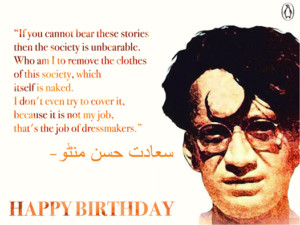 journalistic pieces including those on filmmakers and much more. He is one of the few writers who is associated with subcontinent writing about the social, cultural and political milieu. There is no doubt he was a deeply political writer who had a fraught relationship with the Progressive Writer’s Association. Decades after his death he continues to be read, translated and discussed with passion. It has something to do with the crisp, clear, straight-from-the-heart manner of writing. Apparently he wrote furiously and in large quantities.
journalistic pieces including those on filmmakers and much more. He is one of the few writers who is associated with subcontinent writing about the social, cultural and political milieu. There is no doubt he was a deeply political writer who had a fraught relationship with the Progressive Writer’s Association. Decades after his death he continues to be read, translated and discussed with passion. It has something to do with the crisp, clear, straight-from-the-heart manner of writing. Apparently he wrote furiously and in large quantities.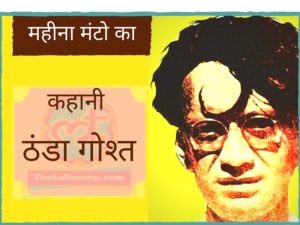 In recent years much of his body of work has been made available in
In recent years much of his body of work has been made available in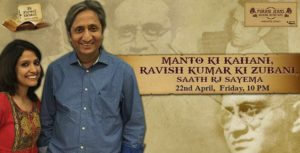 English — jottings on cinema and actors, on Bombay, short fiction etc. Take for instance the Hindi website, thelallantop.com, celebrating a month of Manto ( http://www.thelallantop.com/tehkhana/saadat-hasan-manto-best-stories-in-hindi-thanda-gosht/ ) and Rajkamal Prakashan Group, a highly respected Hindi publishing firm has collaborated with an FM radio channel and has RJ Sayema reading out stories
English — jottings on cinema and actors, on Bombay, short fiction etc. Take for instance the Hindi website, thelallantop.com, celebrating a month of Manto ( http://www.thelallantop.com/tehkhana/saadat-hasan-manto-best-stories-in-hindi-thanda-gosht/ ) and Rajkamal Prakashan Group, a highly respected Hindi publishing firm has collaborated with an FM radio channel and has RJ Sayema reading out stories  every Friday night. Leftword recently brought out an incredible collection of Manto’s essays — Saadat Hasan Manto: The Armchair Revolutionary and Other Sketches which has an introduction by Nandita Das. ( http://bit.ly/23H6IsQ ). Penguin Random House, India has for some time been publishing a lot of Manto books. Some of these are:
every Friday night. Leftword recently brought out an incredible collection of Manto’s essays — Saadat Hasan Manto: The Armchair Revolutionary and Other Sketches which has an introduction by Nandita Das. ( http://bit.ly/23H6IsQ ). Penguin Random House, India has for some time been publishing a lot of Manto books. Some of these are:
